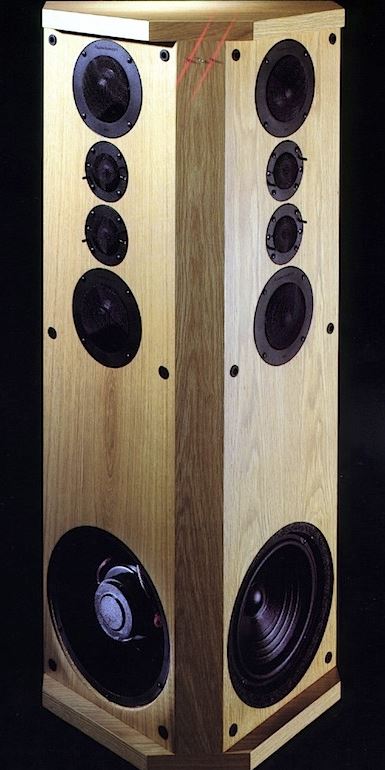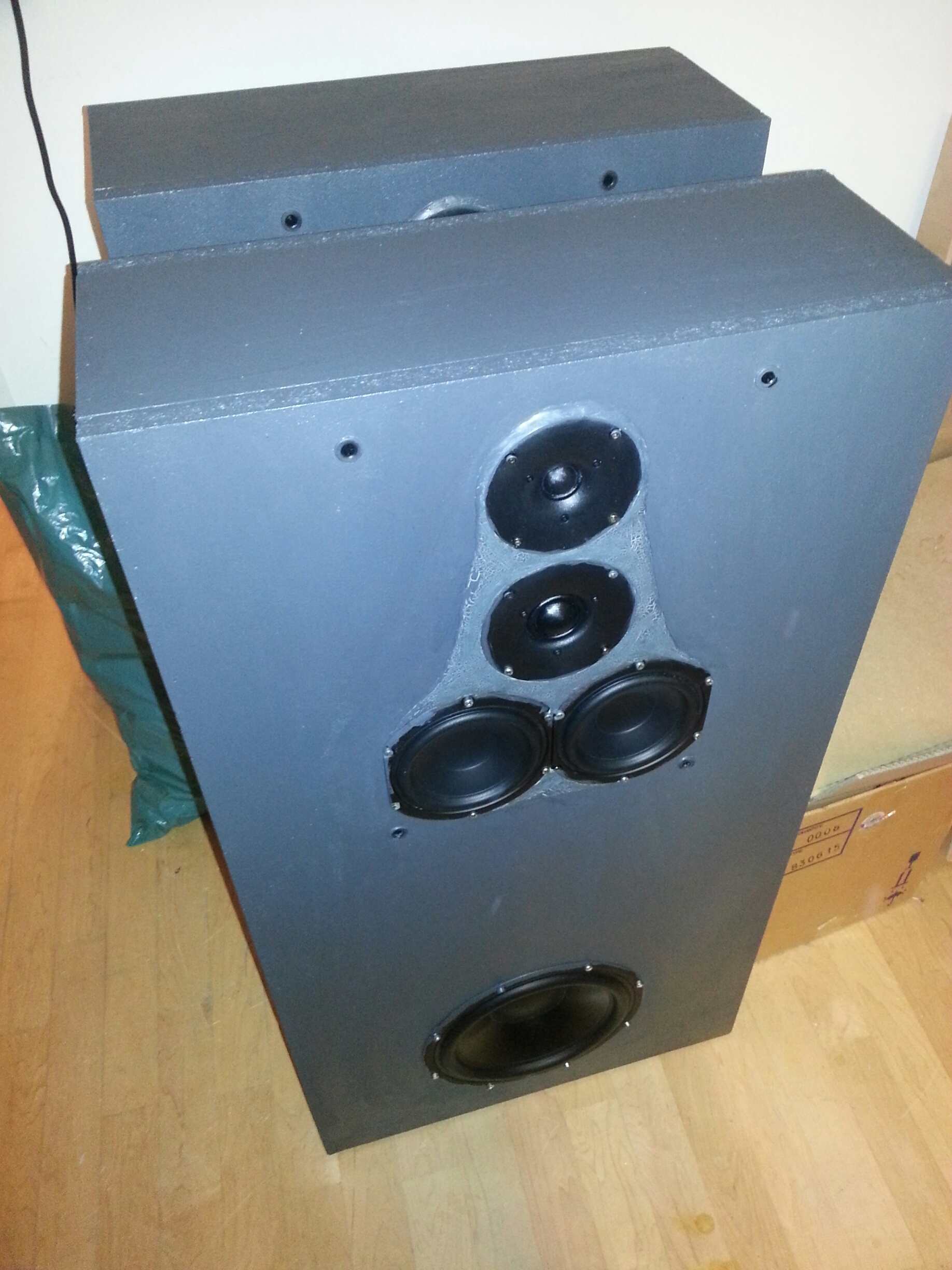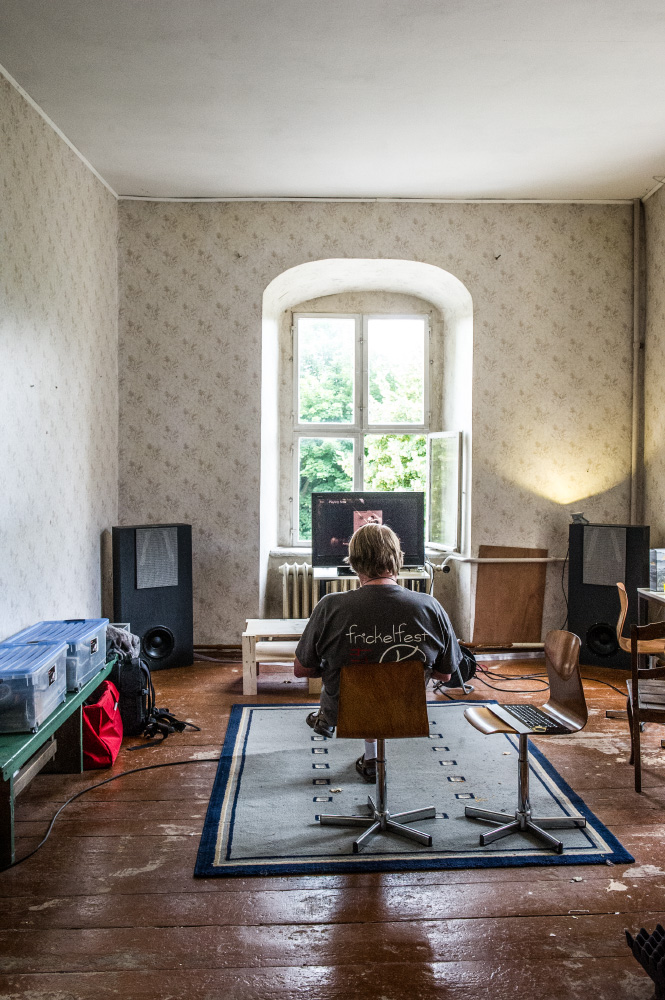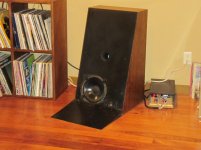What's with the attitude in the responses to this thread?
Ceiling bounce is not the topic of this thread (it's related yes, but not what this thread is about).
We have a general design pattern here that should lessen the issue, and it's a simple question of why most speaker designers choose to not take advantage of this.
I think one of the reason it is not taken care of is the bounce frequency is dependent of position: position of drivers in loudspeaker layout, position of listening spot ( distance AND height hence the reason i linked to SBIR calculator in previous post),...
Most of this are out of touch for the designer once the product hit the market. And even if it was ( or is) specified in manual or recommendation about positioning who take care of that in audiophile world?
When i see some audiophile's room pictures i sometime wonder if the point is not only to show off money rather than sound.
Like Plasnu i do think the room is 50% at least ( i'm more 75% to be honest: 50% is located below schroeder frequency, 25% come from early reflection) of final sound but i came to same conclusion as him. It doesn't interest people ( it doesn't show off as much as technical items).
And more it make the 'magic/ voodoo' disapear and goes hard technical reality instead.
Nothing that comes inline with the esoteric words used to describe 'the sensation' and 'the metaphysical experience' of audiophile market target.
That said many point stated by Kimosto seems true to me. We adapt to signal and may compensate it. That said once you are used to the effect it can be localised and pointed easily on known records.
Last edited:
Hearing is able to adapt to reflections, both early and delayed. Effect of floor bounce is not that bad as simple measurements indicate. This is probably some combination of evolution and learning.
Recording method i.e. type and location of microphone, distance to microphone, recording venue and possible post processing play significant role here especially with human voice but also with acoustical instruments which are not large.
Sound could be quite unnatural without adequate reflection link with room boundaries if recording does not include any reflections or recorded instruments were not in the same acoustical environment; real or processed. Instruments could sound floating almost like in anechoic; too far from ground or anything else natural for typical listening environments. This could also be stressing to listen, ime.
Reproduction with speakers could actually sound quite natural if voice was recorded close to mouth/instrument without much reflections/ambience and possible with some near field effects, and speakers are able to acoustically emulate human head and smallish acoustical instruments; not too large speakers and close to point source locating significantly above the floor, but not in the corners or flush mounted in the front wall.
But this compatibility turn worse if recording already has thin far field sound and reflections. Far field recordings work probably better with more directive speakers (or half space application) designed to transfer recorded sound to listener close to as is, without too much early reflections including floor. But voices recorded at near field could be unnaturally thick and too full-bodied which bothers especially with female voice and some acoustical instruments which sound quite thin at normal listening distance.
Woofer close to floor crossed at 300…500 Hz usually causes “base board sound”. Lower mid-range includes much fundamental frequencies so it’s a risk that different notes or harmonics of the same instrument or different instruments split to separate sources; bass from the floor and others higher, if single woofer or middle point (average elevation) of woofer group is too close to floor.
Balancing of speaker using floor gain for woofer could be more problematic than conventional design. Not so simple to estimate suitable level and response shape for woofer. Initial step could be equalizing power response flat below the lowest crossover point. Woofer close to floor generates also maximum vertical room resonance which causes variance in different rooms and listening spots.
I’m not sure about this, but I suspect that monopole woofer close to floor crossed significantly higher than Schroeder frequency could be one reason for designer’s gray hair. Radiating to half space only within limited range while higher frequencies spread “naturally” above Schroeder does not sound too logical imo.
Surprising or not, dipole woofer is able to avoid many/most of the issues and risks listed above. Dipole woofer or panel creates early reflection link with the room with help of rear radiation so the risk of “base board” and floorless floating sound is much smaller, ime. But it’s quite common that this link with room causes dip at upper bass without very careful positioning of the speakers.
I don’t know actual reasoning of commercial manufacturers, but personally I try to avoid locating single woofer too close to floor if I have a choice and the risk of negative side effects is high – knowing that high position is not perfect either.
This is my “short list”. Hopefully you can find those few words which link the story to woofer located close to floor.
10/10
I think this thread is a good illustration of how a little knowledge is dangerous.
To answer the original question, it's because a narrow 2.5 db dip is not that noticeable with most commercial speakers in most rooms, and an enduring business is usually built on selling more than a few pieces at competitive price points.
Most customers will notice a sin of comission before they will notice a sin of omission, so a spike will be dealt with before a dip.
I doubt that all the measurement methods of the last several decades are part of a deep conspiracy.
Most customers will notice a sin of comission before they will notice a sin of omission, so a spike will be dealt with before a dip.
I doubt that all the measurement methods of the last several decades are part of a deep conspiracy.
Last edited:
Hearing is able to adapt to reflections, both early and delayed. Effect of floor bounce is not that bad as simple measurements indicate. This is probably some combination of evolution and learning.
Recording method i.e. type and location of microphone, distance to microphone, recording venue and possible post processing play significant role here especially with human voice but also with acoustical instruments which are not large.
Sound could be quite unnatural without adequate reflection link with room boundaries if recording does not include any reflections or recorded instruments were not in the same acoustical environment; real or processed. Instruments could sound floating almost like in anechoic; too far from ground or anything else natural for typical listening environments. This could also be stressing to listen, ime.
Reproduction with speakers could actually sound quite natural if voice was recorded close to mouth/instrument without much reflections/ambience and possible with some near field effects, and speakers are able to acoustically emulate human head and smallish acoustical instruments; not too large speakers and close to point source locating significantly above the floor, but not in the corners or flush mounted in the front wall.
But this compatibility turn worse if recording already has thin far field sound and reflections. Far field recordings work probably better with more directive speakers (or half space application) designed to transfer recorded sound to listener close to as is, without too much early reflections including floor. But voices recorded at near field could be unnaturally thick and too full-bodied which bothers especially with female voice and some acoustical instruments which sound quite thin at normal listening distance.
Woofer close to floor crossed at 300…500 Hz usually causes “base board sound”. Lower mid-range includes much fundamental frequencies so it’s a risk that different notes or harmonics of the same instrument or different instruments split to separate sources; bass from the floor and others higher, if single woofer or middle point (average elevation) of woofer group is too close to floor.
Balancing of speaker using floor gain for woofer could be more problematic than conventional design. Not so simple to estimate suitable level and response shape for woofer. Initial step could be equalizing power response flat below the lowest crossover point. Woofer close to floor generates also maximum vertical room resonance which causes variance in different rooms and listening spots.
I’m not sure about this, but I suspect that monopole woofer close to floor crossed significantly higher than Schroeder frequency could be one reason for designer’s gray hair. Radiating to half space only within limited range while higher frequencies spread “naturally” above Schroeder does not sound too logical imo.
Surprising or not, dipole woofer is able to avoid many/most of the issues and risks listed above. Dipole woofer or panel creates early reflection link with the room with help of rear radiation so the risk of “base board” and floorless floating sound is much smaller, ime. But it’s quite common that this link with room causes dip at upper bass without very careful positioning of the speakers.
I don’t know actual reasoning of commercial manufacturers, but personally I try to avoid locating single woofer too close to floor if I have a choice and the risk of negative side effects is high – knowing that high position is not perfect either.
This is my “short list”. Hopefully you can find those few words which link the story to woofer located close to floor.
Thank you for such an excellent and informative response
Speaker positioning is primary tool for floor dip compensation. For example 50...55 cm from inner front edge of the speaker to front wall produces about double delay compared to floor reflection which partly compensates in steady state response and overall balance. Other walls and ceiling affect too and are available for this purpose (if front wall is not), but other sound features such as sound stage and overall balance could be more important than remaining floor dip.
Until we expend as much effort on our rooms as we do on the speaker boxes, I find it's hard to hear recording acoustics in terms of near field microphones or far field recording setups. Presumably, the room ratios affect sound as much as the speaker box dimensions, for instance. And damping might help.
I think it's generally agreed that a dip is far less offensive to the ear than a peak.
Nevertheless, the Allison effect ( A dip...) is one of those room-related problems that might be investigated.
Forum friend Joachim Gerhard built a speaker which bears a passing resemblance to an Allison IC20:

This is where he got to, with doubled mids and tweeters:

A listening test in what looks like a ghastly lively room:

The Quintessentially German Loudspeaker of the 70th. Modern Interpretation.
Joachim was quite pleased with his effort.
This is the old AR MST, another design with interesting ideas to get over the bafflestep issue and dispersion amongst other things. I'd say it's a wall mounter, though whether it sits on the floor or higher up is debateable..

I do truly think that we must just try stuff out. I like good ideas, and there are loads of them in these designs.
I think it's generally agreed that a dip is far less offensive to the ear than a peak.
Nevertheless, the Allison effect ( A dip...) is one of those room-related problems that might be investigated.
Forum friend Joachim Gerhard built a speaker which bears a passing resemblance to an Allison IC20:
This is where he got to, with doubled mids and tweeters:
A listening test in what looks like a ghastly lively room:
The Quintessentially German Loudspeaker of the 70th. Modern Interpretation.
Joachim was quite pleased with his effort.
This is the old AR MST, another design with interesting ideas to get over the bafflestep issue and dispersion amongst other things. I'd say it's a wall mounter, though whether it sits on the floor or higher up is debateable..
I do truly think that we must just try stuff out. I like good ideas, and there are loads of them in these designs.
Last edited:
I have heard a couple of commercial 3 ways with side firing woofers at the floor.
This immediately causes problems when the woofer starts beaming
With a crossover somewhere 300~500Hz, how steep does it have to be and does this then cause group delay problems? Everything is a compromise
This immediately causes problems when the woofer starts beaming
With a crossover somewhere 300~500Hz, how steep does it have to be and does this then cause group delay problems? Everything is a compromise
Gee Steve, I think it depends on the dip in questionI think it's generally agreed that a dip is far less offensive to the ear than a peak.
When coupling is strong, consider that wall as a part of the speaker. Dispersion is half that of the mirrored pair, and always reference DI to full-space.Balancing of speaker using floor gain for woofer could be more problematic than conventional design.
A listening test in what looks like a ghastly lively room:

Joachim was quite pleased with his effort.
---
It must be difficult to find the best speaker for such a room and placement? Well I understand the personal interest, but the outcome cannot be generalized!
I have heard a couple of commercial 3 ways with side firing woofers at the floor.
This immediately causes problems when the woofer starts beaming
Causes problems if woofers are too close to floor because they couple with floor sideways. And if you position higher to avoid this, obviously you lose out on the floor gain a front firing woofer wd benefit from., so they need to be fairly sensitive and probably large, needing a big cab. Then you have to cross them under 300hz minimum, so your front midrange has to include baffle step compensation
Last edited:
Also the Snell Type A.
Sorry about the resurrection, but I can't let a Snell reference go without giving my 2 cents.
Peter Snell really addressed the issue with his Type A's. They've been my main loudspeaker since I found a pair on eBay 10-12 years ago.
Attachments
- Home
- Loudspeakers
- Multi-Way
- Why is floor bounce mostly ignored in commercial speakers??
